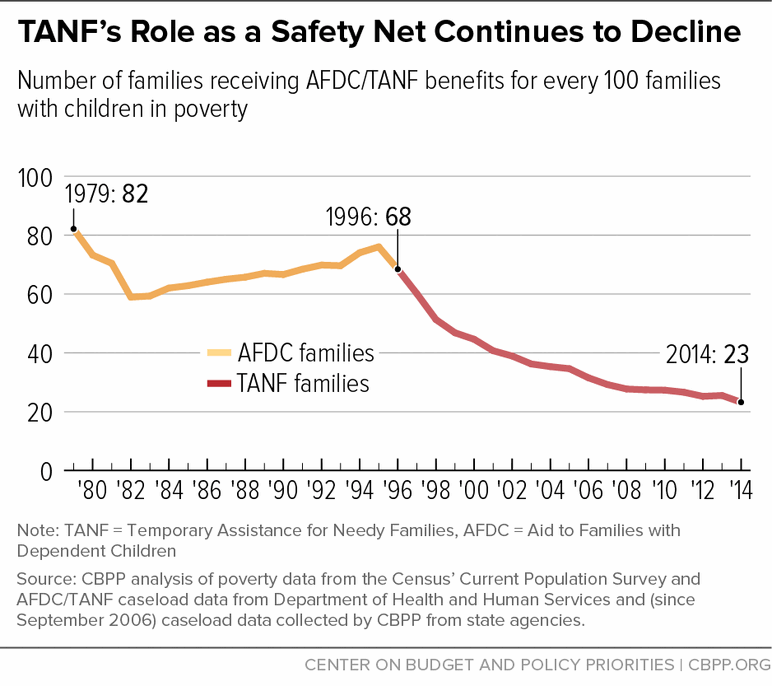BEYOND THE NUMBERS
The Temporary Assistance for Needy Families (TANF) program is meant to help poor families who may have no other means to meet their family’s basic needs. In reality, the program’s reach is short and continues to shrink, as our updated paper shows.
For every 100 families in poverty in 2014, only 23 received cash benefits from TANF. That’s down from the 68 families for every 100 in poverty that received cash assistance when TANF was first enacted in 1996. This TANF-to-poverty ratio (TPR) has fallen nearly every year since 1996, and it’s now at an all-time low (see chart).

The national TPR highlights how the cash safety net for families has weakened since TANF’s creation, but it tells only part of the story. The ratio varies widely among states, ranging from a low of 4 to a high of 78. In 12 states, the ratio is 10 or less, meaning that for every 100 families living in poverty, 10 or fewer receive TANF cash assistance.
Some conservative policymakers tout the success of 1996’s welfare reform — of which TANF’s creation was the cornerstone — and hold TANF up as a model for other programs. With TANF, federal policymakers gave the states responsibility for providing a safety net for families in need.
But far from a success, the result has been a weaker cash safety net that has increased deep poverty. As the Brookings Institution’s Ron Haskins, who helped write the 1996 welfare law as a key House Republican staffer, has said, “States did not uphold their end of the bargain. So why do something like this again?”
As it considers TANF’s future, policymakers should remove incentives for states to further weaken the program’s role as a safety net and hold states accountable for serving families in need.

